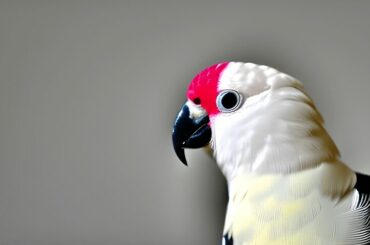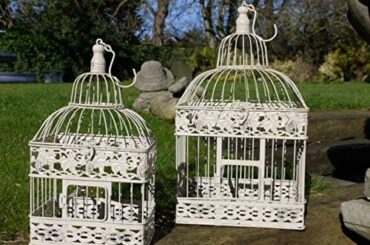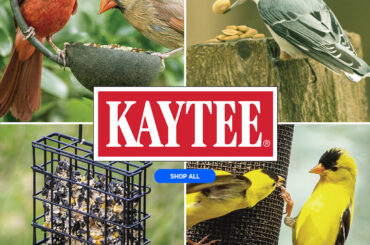Table of Contents
Introduction
Caique Parrot are delightful and lively companion parrots that make fantastic pets for bird enthusiasts. Their unique characteristics and playful demeanor add charm to any household.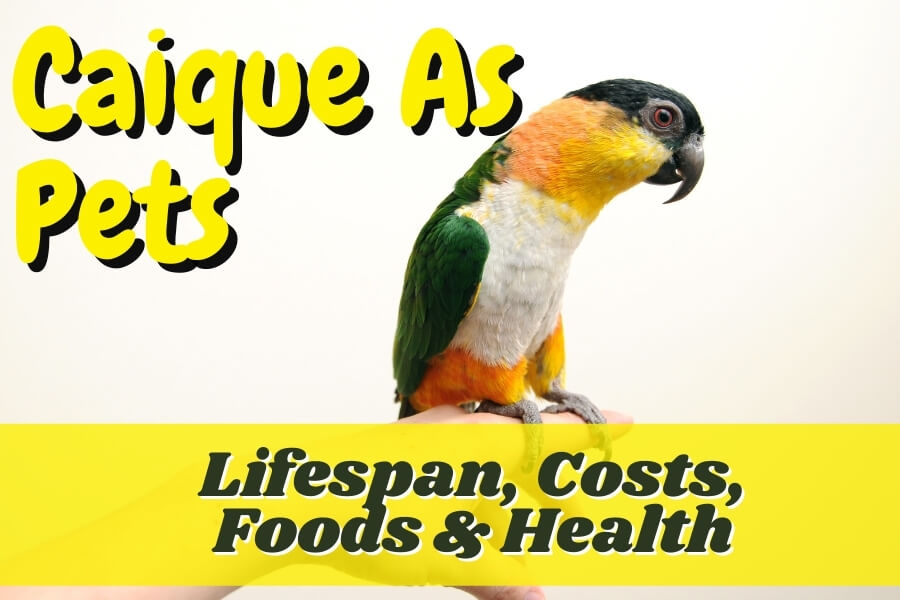
In this article, we will explore the various aspects of caiques, including their physical features, care requirements, training and bonding techniques, socialization with other pets and humans, behavior patterns, breeding practices, traveling tips, and answer some frequently asked questions. By the end of this comprehensive guide, you will have a wealth of knowledge to ensure a happy and harmonious relationship with your caique.
Understanding Caique Parrot
Physical Characteristics of Caique Parrot
- Caiques, also known as the lively clowns of the parrot world, possess distinct physical features that set them apart from other avian companions.
- Caique Parrot showcase a vibrant color palette, with their bright orange undersides, yellow heads, and green wings.
- These medium-sized parrots typically measure around 9 to 12 inches in length.
- Caique Parrot tiny feet and powerful beaks enable them to navigate their surroundings with agility and engage in playful activities.
Differentiating the Two Caique Species
There are two species of caiques: the Black-Headed Caique (Pionites melanocephalus) and the White-Bellied Caique (Pionites leucogaster). While similar in appearance, they possess subtle distinctions. Black-Headed Caiques have black heads and green bodies, whereas White-Bellied Caiques exhibit white bellies and a predominantly orange plumage with green accents. Understanding these subtle variations will help you identify the species with confidence.
Color Variations and Morphs
Within each species, caiques can exhibit unique color variations and morphs resulting from selective breeding. These varieties include the yellow-thighed caiques, which possess brilliant yellow thighs, and the snow-white caiques, exhibiting a stunning white plumage. These diverse colorations contribute to the overall charm and visual appeal of caiques, making them a popular choice among bird enthusiasts.
Caring for Caiques
The Ideal Living Space for Caiques
- Choosing the Right Cage: When selecting a cage for your caique, opt for one that offers ample space for them to move and play. A cage with dimensions of at least 24x24x24 inches is recommended.
- Cage Setup and Accessories: Provide your caique with a stimulating environment by including perches of various sizes and textures, interactive toys, and puzzles to keep them mentally engaged. Ensure that the cage is placed away from direct sunlight and drafts to maintain a comfortable atmosphere.
A Balanced Diet for Caiques
- Essential Foods for Optimal Health: Caiques thrive on a nutritionally balanced diet that includes a variety of fresh fruits, vegetables, high-quality pellets, and limited amounts of seeds. Leafy greens such as kale, spinach, and broccoli, along with fruits like apples, oranges, and berries, should be incorporated into their daily meals.
- Feeding Schedule and Treats: Divide their daily food intake into two meals, ensuring a consistent feeding routine. Treats, such as small nuts or seeds, can be given occasionally as a reward during training sessions.
Maintaining Hygiene and Grooming
- Bathing and Showering Needs: Caiques enjoy bathing and can be offered a shallow dish or misted with water to simulate a natural rainforest environment. Regular bathing helps to maintain their plumage and keeps them refreshed.
- Nail Trimming and Beak Maintenance: Trim your caique’s nails regularly to prevent overgrowth and discomfort. Additionally, offer appropriate bird-safe toys to chew on, which aids in beak maintenance.
Ensuring Physical and Mental Stimulation
- The Importance of Exercise and Play: Caique Parrot are highly energetic birds that require plenty of physical activities to stay happy and healthy. Encourage them to spread their wings and fly by providing a secure and supervised space for flight exercises.
- Providing Enrichment Activities: Stimulate their intelligent minds by offering a variety of toys, puzzles, and interactive games that challenge their problem-solving abilities. Rotate the toys regularly to prevent boredom and promote mental engagement.
Health Considerations and Regular Vet Visits
- Common Health Issues in Caique Parrot: While caiques are generally robust birds, they can be prone to certain health conditions such as feather picking, respiratory infections, and beak abnormalities. Regular check-ups with an avian veterinarian can help ensure early detection and timely treatment.
- Signs of a Happy and Healthy Caique Parrot: A healthy Caique Parrot will exhibit a glossy and vibrant plumage, have clear and bright eyes, and actively engage in play and social interactions. Regular eating, drinking, and vocalizing are signs of a content and well-adjusted caique.
Training and Bonding with Caique Parrot
Building Trust with Your Caique
Developing trust forms the foundation of a strong bond with your Caique Parrot. Spend quality time together, offer treats as rewards, and engage in gentle handling to build a positive association with your presence.
Basic Training Techniques for Caiques
- Teaching Commands and Tricks: Caiques are highly intelligent birds that thrive on mental stimulation. Teach them simple commands like “step-up” and “stay” using positive reinforcement techniques like clicker training.
- Positive Reinforcement Methods: Reward good behavior with praise, treats, or favorite toys. Avoid punishment-based training methods as they can damage the trust and relationship with your caique.
Socializing Caiques with Other Pets and Humans
Introducing Caiques to Other Birds
When introducing your caique to other birds, ensure supervised and gradual interactions to prevent any aggressive behavior. Allow them time to familiarize themselves with each other’s presence before attempting direct contact.
Caiques and Children: Safety and Interaction
Supervision and education are key when allowing children to interact with caiques. Teach children how to gently handle and respect birds, emphasizing the need to avoid sudden movements or loud noises that may startle the caique.
Caring for Caiques in Multi-Pet Households
If you have other pets at home, ensure a safe environment by providing separate spaces for each animal. Introduce the caique gradually to other pets, closely observing their reactions, and intervening if necessary.
Understanding Caique Parrot Behavior
Typical Behaviors and Vocalizations
Caiques are known for their amusing antics and vocal repertoire. They engage in playful behaviors such as hanging upside down, somersaulting, or using their beaks and feet to manipulate toys. Vocalizations range from chirping, whistling, and mimicking various sounds and words.
Signs of Stress or Aggression in Caiques
Stress or aggression in caiques can be observed through behaviors like feather plucking, excessive screaming, biting, or territorial displays. Identifying these signs early on allows for intervention and addressing any underlying issues.
Handling Challenging Caique Behaviors
Challenging behaviors, such as excessive screaming or biting, can be managed by identifying triggers and implementing positive reinforcement techniques. Consulting with an avian behaviorist can provide guidance tailored to your caique’s specific needs.
Breeding and Reproduction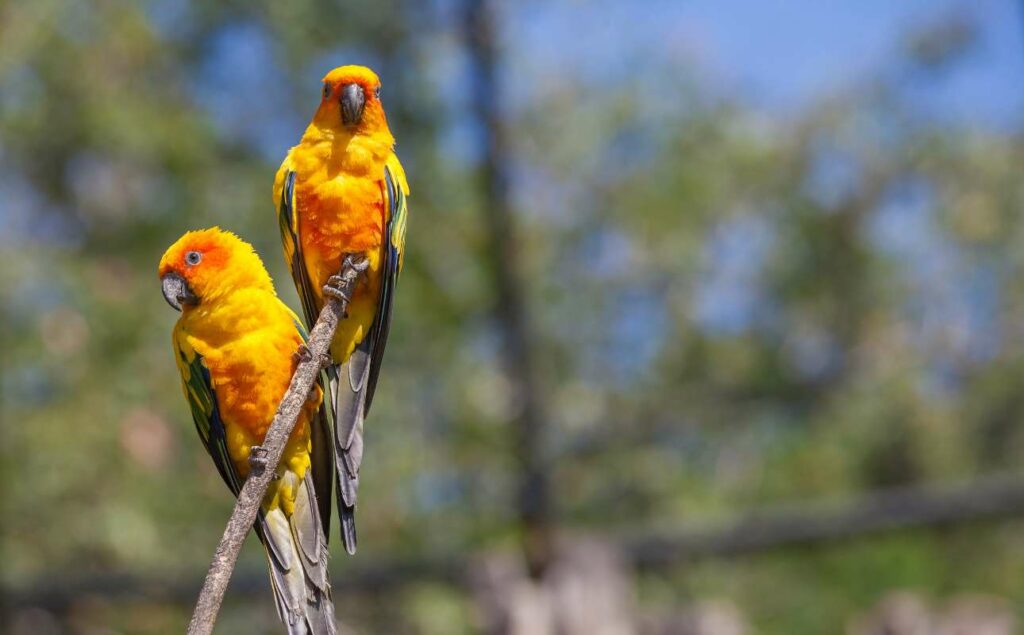
Caique Mating Behaviors and Courtship
Caiques exhibit courtship behaviors characterized by dancing, vocalizations, and the male offering food to the female. Upon successful courtship, they engage in nesting activities, such as gathering materials and producing eggs.
Caring for Caique Chicks
Caique chicks require specialized care, including a controlled temperature environment, specific feeding regimen, and monitoring their growth milestones. Consult with experienced breeders or avian veterinarians for guidance if you plan to breed caiques.
Responsible Breeding Practices
Responsible breeding practices prioritize the overall health and welfare of the birds. Breeders should aim to maintain genetic diversity, provide optimal conditions for breeding pairs, and ensure proper care and placement of the chicks.
Traveling with Caiques
Preparing for Travel with Your Caique
When traveling with your caique, ensure their safety and comfort by using a secure and appropriately sized travel carrier. Familiarize them with the carrier before the actual journey using positive reinforcement techniques to minimize stress.
Tips for Safe and Stress-Free Travel
Maintain a consistent temperature, provide access to fresh water, and limit travel duration to avoid excessive stress. Prioritize your caique’s well-being by planning breaks during long journeys to allow them time outside the carrier for exercise and stretching.
White Bellied Caique
Owning a pet parrot can be a truly rewarding experience, and if you’re looking for a feathery friend that exudes adorability and brings endless energy to your home, then the White Bellied Caique might just be the perfect choice. With their vibrant plumage and lively personalities, these parrots have won the hearts of many bird enthusiasts. In this article, we will delve into the world of White Bellied Caique parrots and provide you with all the essential information you need to know before bringing one into your home.
Appearance and Characteristics of the White Bellied Caique
The White Bellied Caique is a small to medium-sized parrot species that can reach an average length of 9 to 10 inches (23 to 25 cm) and weigh around 6 to 7 ounces (170 to 200 grams). One of their most striking features is their beautiful plumage, which primarily consists of a vibrant mix of green, yellow, and white feathers. Their white bellies are a distinctive trait that sets them apart from other Caique species.
These parrots have a playful and mischievous nature, accompanied by an infectious energy that radiates wherever they go. Their expressive eyes and captivating facial expressions make them irresistible companions for parrot lovers seeking lively interaction and entertainment. Moreover, their intelligence and curiosity make them quick learners, providing ample opportunities for training and mental stimulation.
White Bellied Caique Native Habitat and Distribution
The White Bellied Caique is native to the South American rainforests, specifically in Brazil, Bolivia, and parts of Peru. In the wild, they can be found darting through the canopies, displaying their acrobatic abilities with incredible agility. These parrots thrive in the tropical climate and are well adapted to the lush vegetation and diverse ecosystems of their native habitat.
White Bellied Caique – Diet and Nutrition
In captivity, a well-balanced diet is crucial for the overall health and wellbeing of White Bellied Caique parrots. To ensure their nutritional needs are met, a combination of fresh fruits, vegetables, high-quality pellets, and occasional treats should be offered. Leafy greens such as spinach and kale, along with fruits like apples and berries, can provide essential vitamins and minerals. It’s important to avoid providing excessive fatty or sugary foods, as these can lead to health issues such as obesity.
Housing and Environment for White Bellied Caique
White Bellied Caiques are highly active birds that require ample space and mental stimulation to thrive. A spacious cage, ideally sized at least 24x24x24 inches (61x61x61 cm), equipped with various perches and toys for climbing and chewing, is essential. Providing a stimulating environment with toys that encourage foraging and problem-solving will keep these parrots entertained and mentally sharp. Additionally, ensuring a well-ventilated area with a comfortable temperature range of 65 to 80°F (18 to 27°C) is crucial for their overall well-being.
Exercise and Enrichment
To fulfill their energetic nature, regular exercise and enrichment activities are vital for White Bellied Caique parrots. Allowing them supervised out-of-cage time to explore and fly within a safe environment is highly recommended. Interactive playtime with their human companions can include games like fetch or teaching them new tricks. Additionally, providing toys that encourage physical activity, such as climbing structures or puzzle toys, will help engage their agile minds and keep them physically fit.
Socialization and Interaction
White Bellied Caiques are known for their sociable and affectionate nature, making them exceptional companions. They enjoy being the center of attention and thrive in an environment where they are included in daily activities. Regular, positive interaction with their human caregivers is essential for their emotional well-being. These parrots are also highly intelligent and can learn to mimic speech and respond to cues and commands, further enhancing their ability to engage with their human family members.
Health and Veterinary Care
Maintaining the health of a White Bellied Caique requires regular veterinary check-ups and attentive care. Annual visits to a qualified avian veterinarian, along with routine grooming, such as wing clipping and nail trimming, are recommended. Observing their behavior and looking out for signs of illness, such as changes in appetite or feather condition, will aid in detecting any potential health issues promptly. Additionally, providing a clean living environment and a balanced diet will contribute to their overall well-being.
Conclusion
The White Bellied Caique is an adorable and energetic pet parrot that can bring immense joy and vitality to your life. With their striking appearance and playful personalities, they are sure to captivate anyone who welcomes them into their home. By understanding their unique characteristics, providing a suitable environment, and offering proper care, you can establish a strong bond with these feathered companions that will bring years of happiness and companionship. So, are you ready to embark on this delightful journey with a White Bellied Caique parrot?
Caique for sale
If you are interested in finding a Caique for sale, I recommend using popular online platforms, such as pet classified websites or forums, to search for reputable breeders or adoptable birds in your area.
Black Headed Caique
The Black-headed Caique (scientifically known as Pionites melanocephala) is a small to medium-sized parrot that belongs to the Psittacidae family. It is also commonly referred to as the Black-capped or Black-hooded Parrot. The Black-headed Caique is native to the northern parts of South America, particularly found in the Amazon Basin, Brazil, Colombia, and Venezuela.
How to Pronounce Caique
Caique (pronounced “kih-ke”) parrots are known for their vibrant personalities and playful nature. Originally hailing from the forests of South America, these delightful creatures have captured the hearts of bird enthusiasts worldwide. But before you decide to welcome a Caique into your home, it’s important to learn the basics, starting with how to properly pronounce their name.
The Correct Pronunciation
To pronounce Caique correctly, emphasize the first syllable, pronouncing it as “kih.” The second syllable, pronounced as “ke,” should be said sharply to form a distinct sound. Remember to keep the emphasis on the first syllable when saying their name – kih-KE – to ensure accuracy.
Physical Characteristics of Caique Parrots
Caiques are small to medium-sized parrots that exhibit a remarkable range of vibrant colors. Sporting a predominantly white chest and belly, these feathered beauties are adorned with splashes of yellow, orange, and black on their heads, wings, and tails. Their expressive eyes and stout bodies give them an endearing appearance that is hard to resist.
Size and Weight
Adult Caiques typically measure between 9 and 13 inches (23-33 cm) in length, making them a compact and manageable addition to any household. Despite their small stature, they pack a lot of energy into their robust bodies, which usually weigh around 6.5-8 ounces (185-225 grams).
Feather Colors and Patterns
One of the most striking features of Caiques is their captivating plumage. The tops of their heads are adorned with a vivid orange color that seamlessly blends into the vibrant yellow feathers on their cheeks and lower crown. Fluorescent yellow feathers also grace their upper body, merging into a beautiful combination of black and greenish-yellow on their wings. As if this weren’t enchanting enough, their fluffy tails exhibit a striking mix of black, green, and orange hues – truly a sight to behold!
Beak and Feet
A Caique’s beak is short, strong, and slightly curved, enabling them to crack open nuts and seeds with ease. Their feet are zygodactyl, which means they have two toes facing forward and two toes facing backward. This unique foot structure allows them to grasp objects and climb with exceptional agility, making them natural acrobats.
Personality Traits and Temperament
Caiques are renowned for their lively, boisterous, and mischievous personalities. These petite parrots possess a zest for life that is infectious, guaranteeing endless entertainment for their owners. Here are some key personality traits you can expect from your Caique:
Playful and Energetic
Caiques are bundles of energy and require plenty of mental and physical stimulation to thrive. They love interactive toys, puzzle feeders, and any activity that keeps them engaged. Be prepared for their playful antics, as Caiques are known for their acrobatic feats and endless curiosity.
Affectionate and Sociable
Despite their high energy levels, Caiques are incredibly affectionate and form strong bonds with their human caregivers. They enjoy being held, cuddled, and included in family activities. It’s important to interact with them regularly to maintain their social well-being and prevent boredom.
Clever and Intelligent
With an impressive intelligence level, Caiques are quick learners and can entertain themselves with puzzles and problem-solving games. They thrive on mental stimulation, so providing them with a variety of toys and opportunities for intellectual engagement is crucial.
Vocal and Communicative
Caiques are skilled talkers and mimicry artists. Although their vocabulary may not rival that of larger parrot species, they can learn to imitate a range of sounds, including words, whistles, and even household noises. Their vocalizations are cheerful and expressive, adding a delightful ambiance to any home.
Caring for Your Caique Parrot
To ensure the health and happiness of your Caique parrot, it’s essential to provide them with proper care and enrichment. Here are some tips to help you become the best caregiver for your feathered friend:
- Diet and Nutrition
- Offer a balanced diet that includes a variety of fresh fruits, vegetables, high-quality pellets, and occasional seed treats.
- Ensure a constant supply of clean, fresh water.
- Avoid avocados, chocolate, caffeine, alcohol, and any toxic foods.
- Housing
- Provide a spacious cage with ample room for your Caique to move, stretch, and play.
- Include plenty of toys, perches of different textures, and a separate area for sleeping.
- Regularly clean and sanitize the cage to maintain a hygienic environment.
- Exercise and Mental Stimulation
- Dedicate time for supervised out-of-cage play sessions to allow your Caique to explore and exercise.
- Offer a variety of toys that encourage climbing, foraging, and problem-solving.
- Rotate toys regularly to keep their environment stimulating.
- Socialization and Bonding
- Interact with your Caique daily through talking, playing, and gentle physical contact.
- Consider getting your Caique a same-species companion or spending quality time with them to prevent loneliness.
- Healthcare
- Schedule regular check-ups with an avian veterinarian to ensure your Caique’s well-being.
- Monitor their feathers, eyes, and beak for any signs of abnormalities.
- Keep their environment clean to prevent the buildup of bacteria or fungi.
Caique parrots can bring immeasurable joy and laughter into your life. With their adorable looks, energetic nature, and engaging personality, they are sure to captivate anyone who crosses their path. By understanding their needs and providing them with the love and care they deserve, you’ll embark on a remarkable journey with your feathered companion.
How Much is a Caique Parrot?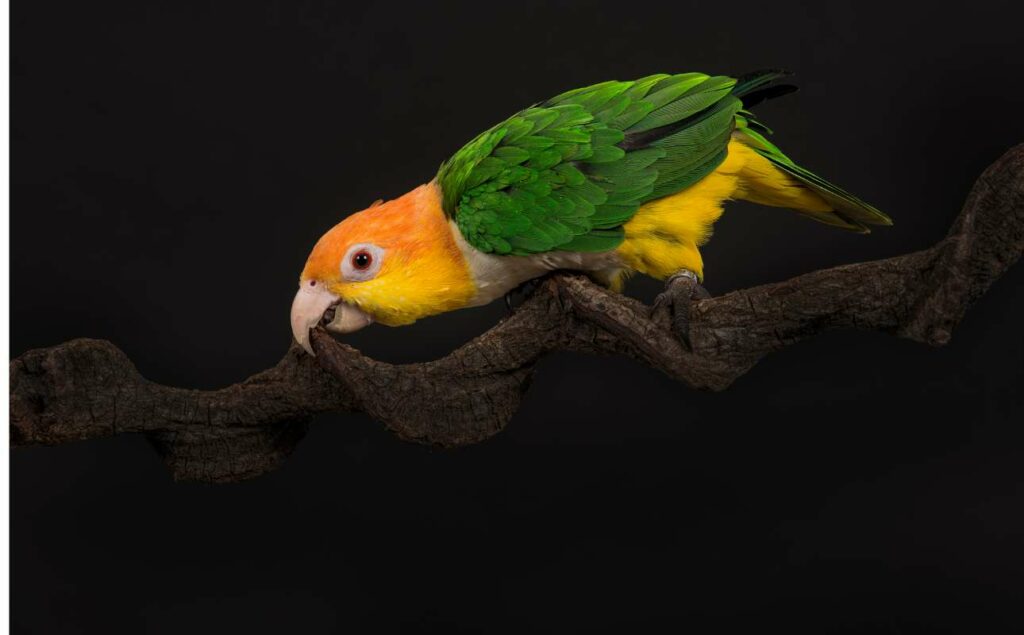
Are you considering bringing a delightful and lively companion into your home? Look no further than the charming Caique Parrot! But before you embark on this exciting journey, it’s essential to understand the financial aspect of owning a Caique Parrot. In this section, we will delve into the cost associated with acquiring and caring for these magnificent creatures.
Initial Purchase Cost
When it comes to purchasing a Caique Parrot, you can expect to invest anywhere between $800 and $1,500, depending on various factors such as the bird’s age, color mutation, and breeder reputation. Keep in mind that the initial cost is just the beginning of your financial commitment.
Ongoing Expenses
Cage and Accessories:
- A comfortable and spacious cage is a fundamental requirement for your Caique Parrot. Expect to spend around $200 to $400 on a suitable enclosure, depending on its size and quality.
- Don’t forget about the necessary accessories, including perches, toys, and food dishes. These enhancements promote mental stimulation and physical exercise, ultimately contributing to your parrot’s well-being. Budget an additional $100 to $200 for these items.
Nutritious Diet:
- Providing your Caique Parrot with a balanced and nutritious diet is crucial for their overall health and longevity. Their diet should consist of high-quality pellets, fresh fruits, vegetables, and occasional treats.
- Plan on spending approximately $30 to $50 per month on food supplies to ensure your parrot receives the essential nutrients they need.
Veterinary Care:
- Like any beloved pet, regular veterinary check-ups are essential to monitor your Caique Parrot’s health and ensure early detection of any potential issues. These visits may cost between $50 and $100 each time, depending on your location and the services provided.
- Additionally, it’s wise to set aside some funds for unforeseen circumstances or emergencies that may require immediate medical attention.
Grooming and Maintenance:
- Caique Parrots are known for their playful and mischievous nature, which can result in the need for regular nail trims and beak shaping. While you can perform these tasks at home with proper guidance, you may also consider professional grooming services, which can cost approximately $20 to $30 per session.
Miscellaneous Expenses:
- Consider other routine expenses such as high-quality bedding materials for the cage bottom, cleaning supplies, and environmental enrichment items.
- These miscellaneous expenses can add up to around $20 to $30 per month.
Conclusion
It’s crucial to consider both the initial purchase cost and ongoing expenses when determining if owning a Caique Parrot fits within your budget. The total investment of owning a Caique Parrot Price can range from approximately $1,200 to $2,500 annually, depending on various factors and personal preferences.
Remember, while the financial commitment may seem significant, the joy and companionship that these adorable and energetic pets bring into your life are truly priceless. Carefully planning and budgeting for their needs will ensure a fulfilling and rewarding experience for both you and your feathered friend.
READ ALSO:
- Demystifying Senegal Parrot Lifespan: What Every Parrot Lover Needs to Know – Senegal Parrot 101
- Senegal Parrot for Sale at Unbeatable Prices: Find Your Perfect Feathered Companion
- Jenday Conure Species Profile: Bringing the Beauty of the Wild to Your Home
Frequently Asked Questions (FAQs)
Can Caiques Talk?
While not known for extensive talking abilities, caiques can learn a few words and phrases. However, they often prefer to communicate through vocalizations and body language.
How Long Do Caiques Live? Caique Lifespan
Caiques have a relatively long lifespan, with proper care and nutrition, they can live up to 30 years or more. Caique lifespan will live up to 30 years. Creating a stimulating environment and providing a balanced diet are essential for their longevity.
Are Caiques Suitable for First-Time Bird Owners?
Caiques can be suitable for first-time bird owners as long as they are prepared to dedicate time, effort, and resources to their care. It is crucial to research their specific needs and consult experienced bird owners or avian professionals for guidance.
How Much Interaction and Attention Do Caiques Require?
Caiques thrive on social interaction and require several hours of daily playtime outside their cage. Regular engagement in activities stimulates their minds and prevents boredom or undesirable behaviors.
Do Caiques Make Good Apartment Pets?
Caiques can adapt to apartment living, provided they receive sufficient mental stimulation, exercise, and social interaction. Their playful nature and compact size make them a suitable choice for apartment dwellers.
Conclusion
In summary, Caique Parrot are captivating and energetic pet parrots that bring joy and entertainment to any household. Understanding their physical characteristics, care requirements, training techniques, socialization needs, behavior patterns, breeding practices, and travel considerations will ensure a harmonious and fulfilling relationship with your delightful caique companion. By following this comprehensive guide, you are well-equipped to embark on an enjoyable journey with these adorable and lively feathered friends.

